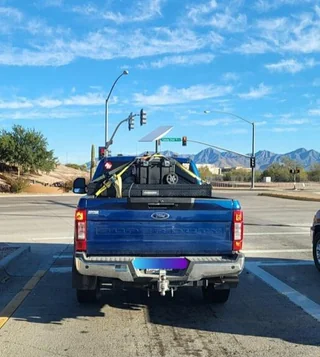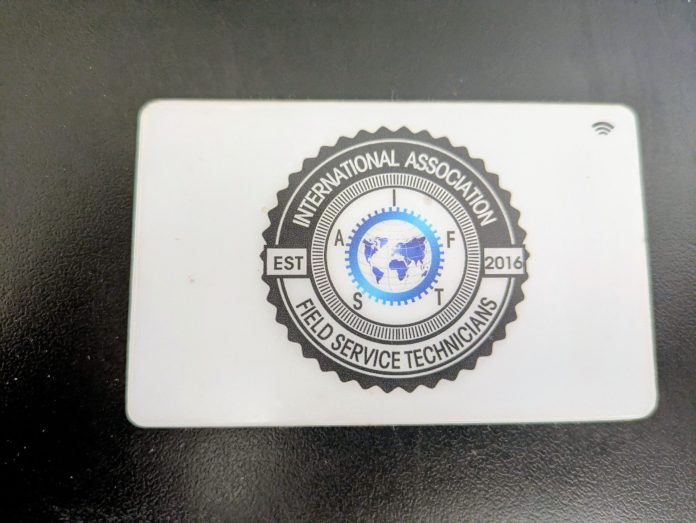The mortgage field services industry has long been defined by the constant tug-of-war between operational efficiency and the economic realities facing the laborers who hold it together. Nowhere is that conflict more evident than in the expanding conversation around internet connectivity in rural America—particularly how Field Service Technicians and Inspectors are leveraging Elon Musk’s Starlink satellite system to stay connected in the most remote assignments. For decades, contractors have struggled with dead zones, unreliable data uploads, and the inability to transmit time-stamped geolocation data required by vendors and national management companies. The rise of Starlink, with its rapidly expanding constellation of low-orbit satellites, has rewritten that equation. What makes the issue relevant now is not the technology itself, but how it’s being quietly adopted by those in the field—not as a luxury, but as a survival tool—and how its pricing, recently slashed to rock-bottom levels, signals both a disruptive force and a potential economic equalizer for rural labor in an industry addicted to exploitation.
For the Inspector, whose livelihood depends on timely photo uploads, occupancy verifications, and GPS-validated reports, connectivity has always been a gatekeeper. When contracts are awarded based on turnaround time and reliability, the Inspector without signal might as well be invisible. Many live and work in what urban executives call “coverage gaps,” where cellular data is a wish and not a given. Until recently, the only options were satellite providers like HughesNet or Viasat, notorious for throttled speeds and inflated pricing. Then Starlink entered the market, quietly reducing monthly costs to around $80 — $59 for the first year and the price includes all the hardware needed depending on location — and even lower in some rural areas. For the first time, Inspectors could upload full-resolution condition reports in minutes, rather than waiting hours for a cellular tether to crawl its way through a file transfer. This has revolutionized not only how work gets submitted, but also who can viably compete in the inspection sector—leveling the playing field for rural operators long excluded by geography and infrastructure neglect.
Field Service Technicians, by contrast, face an entirely different calculus when it comes to connectivity. These are the boots-on-the-ground laborers cutting grass, boarding windows, securing doors, and hauling debris from foreclosed properties that banks and servicers would rather forget. For them, connectivity is not merely about submitting reports; it’s about verifying compliance, scanning QR codes, clocking in on mobile apps, and proving—often in real time—that the work was done. Many rely on the same rural roads and remote townships as Inspectors, yet are saddled with even less compensation. The rock-bottom price of Starlink has suddenly made it feasible for a crew to maintain a mobile base station in their truck, turning a once unthinkable luxury into a job-critical necessity. What’s notable is that, for many small preservation businesses, the cost of Starlink now represents less than one percent of monthly operating overhead—less than what’s wasted on fuel idling during photo uploads in dead zones.
With recent demands for video by private label funds, the reality is that Starlink is a viable option under their Roaming program versus attempting to use onboard vehicle internet options.
The economic implications are profound. In a sector where national vendors routinely demand rapid response from subcontractors scattered across thousands of miles, Starlink represents a quiet act of rebellion against systemic inefficiency. It allows independent contractors to bypass the unreliable cell towers and overburdened rural broadband monopolies that have historically throttled productivity. More importantly, it gives the laborer—both Inspector and Technician alike—a fighting chance to reclaim time and dignity in a workflow designed to extract both. Yet, there’s an irony here: the very same national management companies that demand instant photo verification and real-time GPS compliance are the ones who refuse to increase pay to offset the rising operational costs of doing business. They reap the benefits of faster data delivery while the cost of that infrastructure falls squarely on the backs of labor.
At the same time, Starlink’s declining prices underscore a broader macroeconomic shift. Musk’s company, once derided as a boutique solution for off-grid enthusiasts, has scaled to such a degree that it now threatens to undercut legacy telecom providers. This has immediate relevance for the field services sector, which relies heavily on gig-style labor distributed across rural and semi-rural territories. The ability to establish a 100 Mbps connection in a place where the nearest cell tower is 20 miles away is not just a convenience—it’s a competitive advantage. For independent Inspectors bidding directly on work orders, or for Technicians running multiple job sites in parallel, that connectivity can mean the difference between a profitable week and a financial loss. In an industry where the average inspection still pays $8 and the average grass cut $35, any edge that reduces wasted time is transformative.
When it comes to disaster areas, Starlink keeps you in the driver’s seat with respect to inspections, clean up operations, and rehabs. And it is there for you when all other services, including cell phones, are down!
But Starlink’s accessibility also highlights the structural inequities embedded in how labor is compensated. For every Inspector who can now upload from a mountain ridge, there’s a dozen Field Service Technicians still fighting to justify the cost of adopting the same technology. The rock-bottom pricing might seem democratic on paper, but when pay rates remain stagnant and expenses climb, even $90 a month can feel punitive. This is the same labor force already absorbing the cost of gas, insurance, tools, and non-reimbursed materials, all while being classified as “independent contractors” to sidestep wage laws. The question becomes: should vendors subsidize connectivity, given that their profit model depends on the real-time delivery of data made possible by these networks? So far, the answer has been a resounding no, further entrenching the divide between corporate command centers and the rural front lines.
Ethically, the discussion takes on a sharper edge when one considers how Starlink data can be used against the very people who rely on it. With most vendor platforms requiring geotagged submissions, the precision of satellite-based connectivity introduces new levels of surveillance. Every login, photo timestamp, and GPS coordinate is a breadcrumb in the digital trail of labor compliance. Inspectors have reported being deactivated for “late submissions” even when network outages were to blame—issues now rendered irrelevant by Starlink’s near-total uptime. The irony is palpable: by investing in their own connectivity, workers inadvertently give vendors the tools to police them more efficiently. It’s a digital panopticon disguised as productivity, and one that exposes just how asymmetrical the power dynamics remain in this gig-driven industry.
From a logistical perspective, the adoption of Starlink has also begun reshaping how preservation firms operate in the field. Small regional vendors have started installing Starlink terminals on mobile command trailers, allowing real-time coordination between crews scattered across multiple counties. This not only reduces downtime but also facilitates instant documentation during Quality Control audits—a major pain point in HUD, Fannie Mae, and Freddie Mac compliance. For the first time, rural contractors can achieve the same level of operational transparency as their urban counterparts, without the need for expensive cellular contracts or fixed broadband installations. Yet this technological parity does not translate to financial parity; the contract hierarchy still ensures that most profits flow upward, while risk and cost flow downward.
The broader societal context is equally revealing. The same rural counties where Inspectors and Technicians struggle to find reliable internet are often those hardest hit by foreclosure waves and economic decline. In these communities, Starlink represents more than a communications tool—it’s an infrastructural lifeline. When a preservation crew can file reports in real time, municipalities can process code compliance faster, reducing property blight and mitigating neighborhood decay. The paradox, however, is that this labor-driven efficiency feeds into a system that rarely rewards the laborers themselves. The gains are captured by asset management firms, hedge fund landlords, and servicers whose balance sheets swell while the workers remain one missed invoice away from insolvency.
As with many technologies in the mortgage field services world, Starlink’s potential is both liberating and exploitative. It empowers the rural laborer to compete on a digital plane previously reserved for urban contractors, while simultaneously reinforcing a model of economic dependency on private infrastructure. The rock-bottom pricing, hailed as revolutionary, only underscores how artificially inflated the costs of basic connectivity have been all along. Whether this signals a new era of empowerment or simply another phase in the industry’s long history of shifting burdens onto the working class remains to be seen. What is clear is that Starlink has become more than a convenience—it’s a mirror reflecting the contradictions of an industry built on speed, secrecy, and the disposable nature of its most vital participants.
In the end, the adoption of Starlink by Inspectors and Field Service Technicians exposes both the resilience and desperation of the workforce. These are individuals who will spend their own money to bridge systemic failures left unaddressed by billion-dollar servicers and indifferent regulators. They will build their own digital infrastructure in the same way they board up the physical remnants of a failed economy—quietly, efficiently, and without credit. The rock-bottom price of Starlink may be the best deal in telecommunications, but in the mortgage field services industry, it’s also the latest testament to a labor force forced to buy the tools of its own subjugation in order to keep working.






